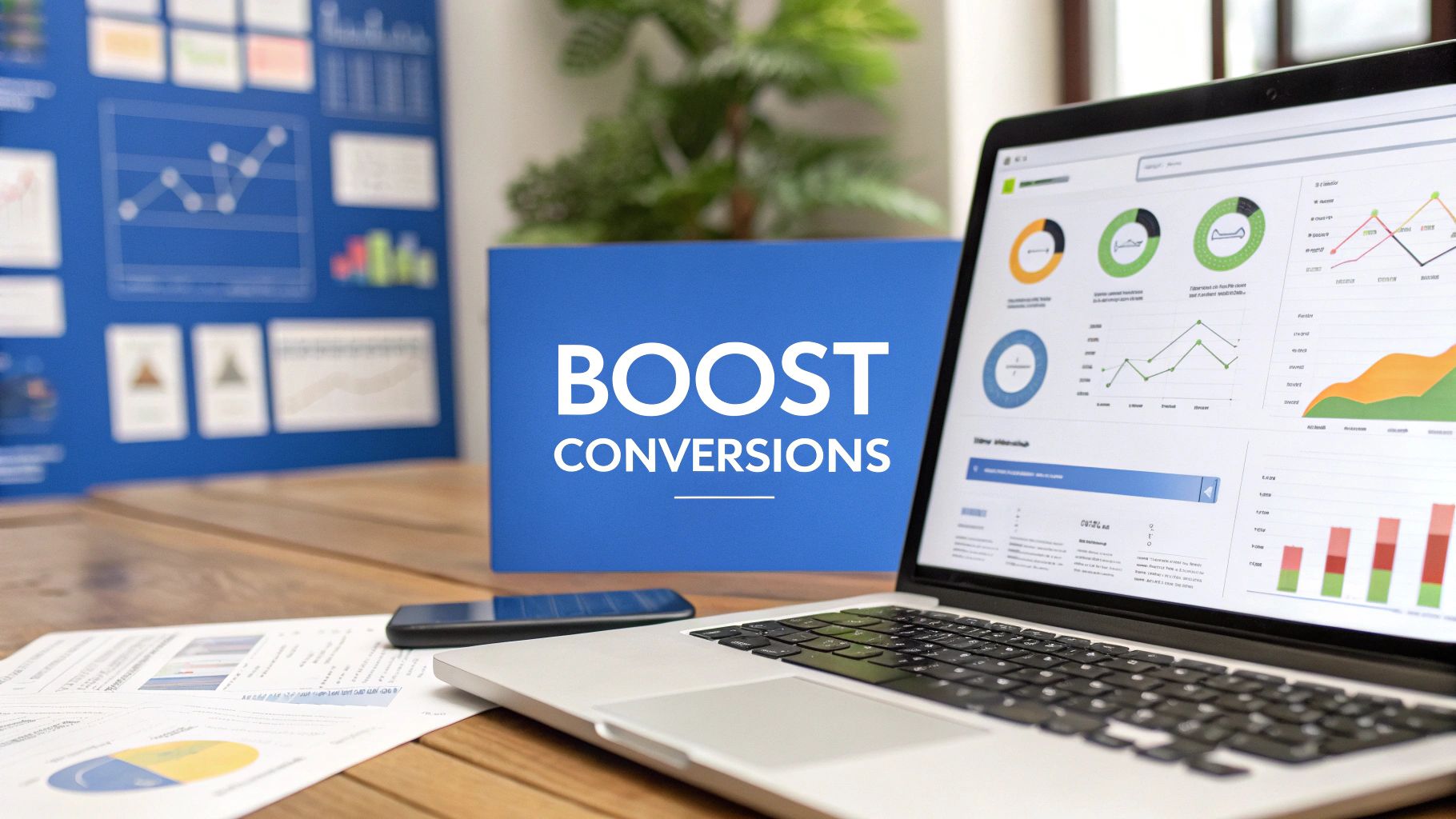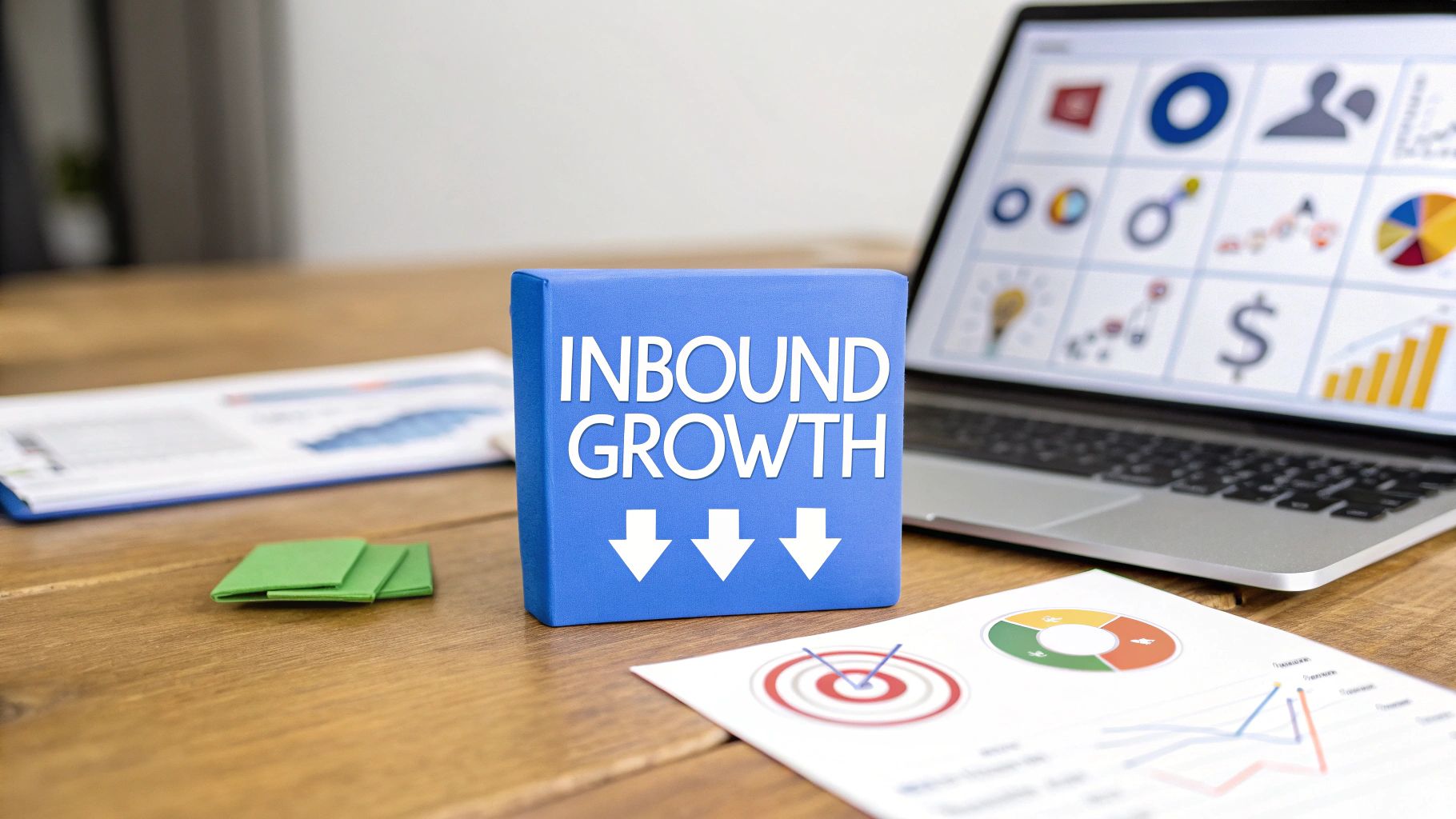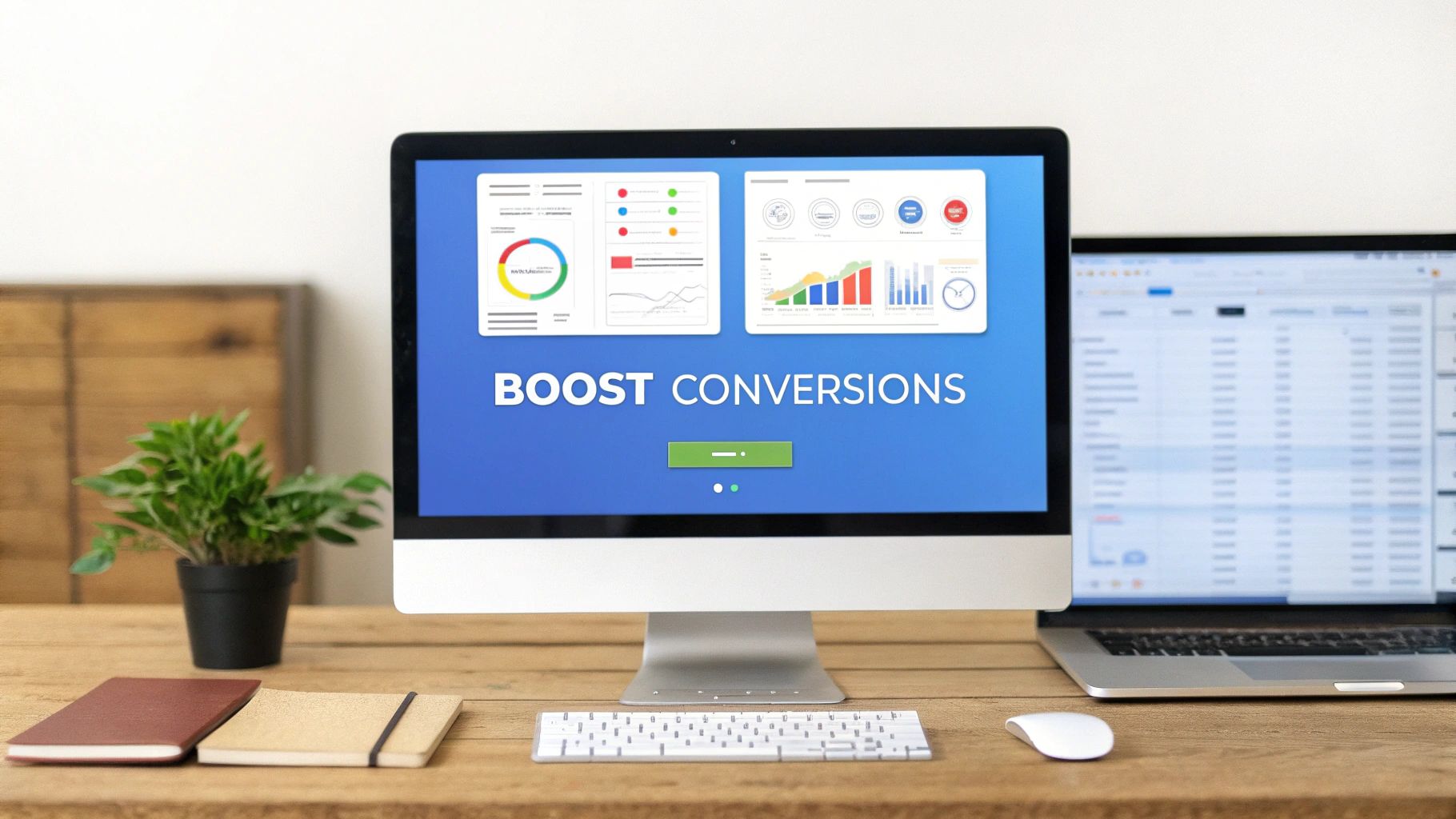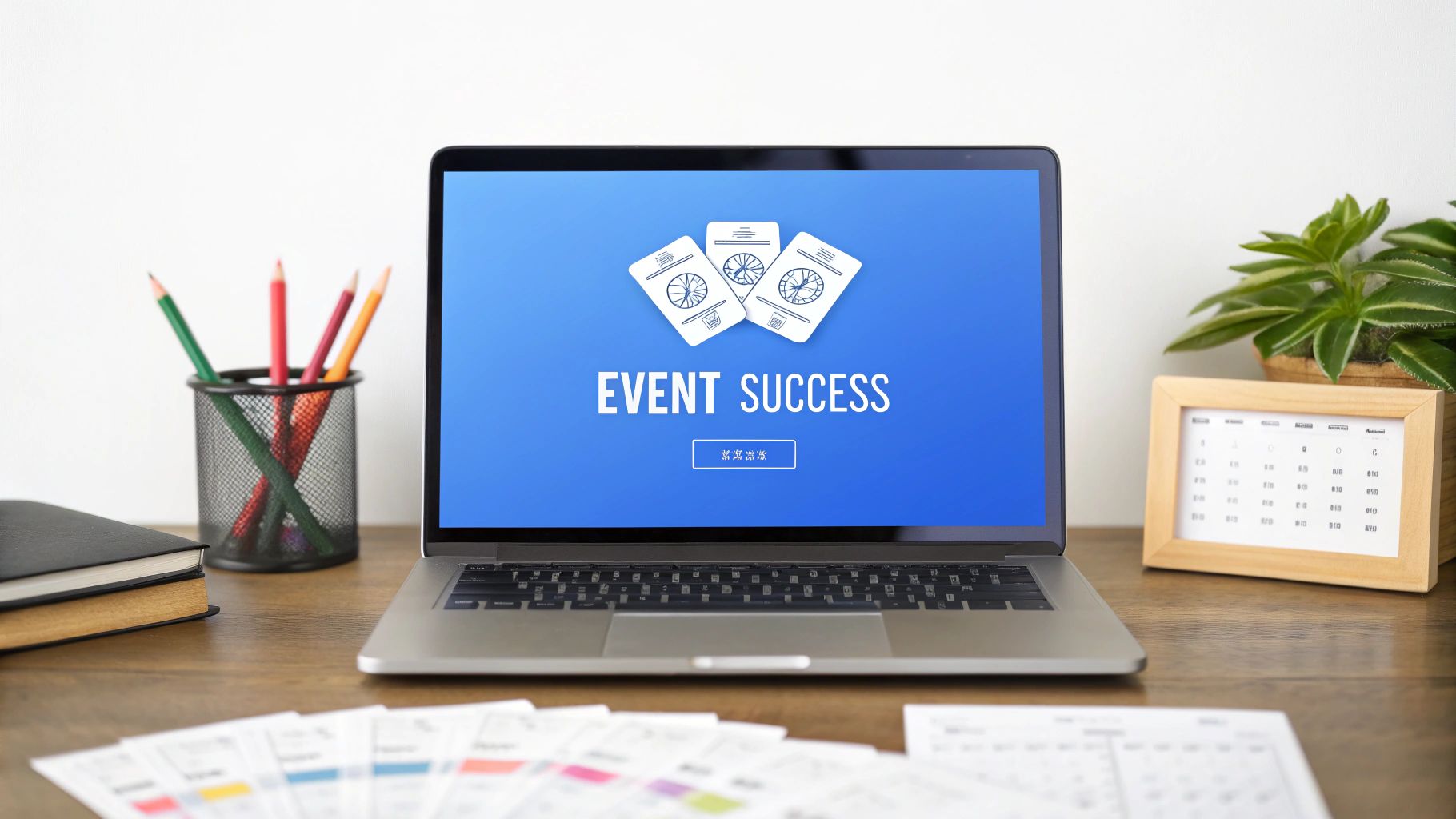Summary
Meta Description: Skyrocket your conversions with these expert CRO strategies. Learn A/B testing, personalization, and social proof to turn more clicks into customers today.
Are you pouring money into Google Ads only to see disappointing returns? It's a common frustration. You've perfected your ad copy, targeted the right keywords, and set a competitive bid. Yet, the final piece of the puzzle—the conversion—remains elusive.
What's going wrong? Often, the problem isn't the ad. It's what happens after the click. A poorly optimized landing page can halt even the most interested prospect in their tracks, turning potential revenue into a bounced visitor.
This is where conversion rate optimization (CRO) becomes your most valuable asset. But what if you could implement proven conversion rate optimization strategies without the guesswork? This guide dives deep into 10 actionable tactics designed to transform your Google Ads landing pages into high-performing conversion engines. We'll move beyond generic advice to give you specific, data-backed methods that separate the best from the rest.
Ready to see how? You will learn exactly how to implement powerful techniques, including:
- A/B Testing: Make data-driven decisions that eliminate costly assumptions.
- Personalization: Create a unique and compelling user experience for every visitor.
- Friction Reduction: Simplify forms and checkout processes to boost completion rates.
- Urgency Psychology: Ethically motivate immediate action from potential customers.
Let's explore these strategies and more. We'll provide practical steps and real-world scenarios to help you stop wasting ad spend and start maximizing your return on investment. Are you ready to turn more of your clicks into customers?
1. What is A/B Testing and How Does It Improve Conversions?
A/B testing, also known as split testing, is a foundational method among conversion rate optimization strategies. It involves comparing two versions of a single variable, like a webpage headline or a call-to-action button, to see which one performs better. By showing version "A" to one segment of your audience and version "B" to another, you gather hard data on which one drives more conversions.
This data-driven approach removes guesswork from your marketing decisions. It ensures you make changes based on proven user behavior, not just intuition. For instance, Barack Obama's 2008 campaign famously boosted donations by 40% simply by testing different button text and media.
How to Implement A/B Testing Effectively
To get started, identify a single element on your landing page that could impact conversions. This could be your headline, hero image, or CTA button color. Then, use a testing platform like Google Optimize or Optimizely to create a variation and split traffic between the two versions.
Here are some actionable tips for successful A/B testing:
- Isolate Your Variable: Test only one element at a time. If you change both the headline and the button, you won't know which change caused the performance shift.
- Ensure Statistical Significance: Don't end a test too early. You need a large enough sample size to ensure your results are valid and not just due to random chance.
- Run for a Full Business Cycle: Let your test run for at least one to two weeks to account for weekly fluctuations in user behavior.
- Start with High-Impact Elements: Begin by testing elements "above the fold" or those directly related to the conversion action. These often yield the biggest results with the least effort.
2. Why is Landing Page Optimization a Top CRO Strategy?
Landing page optimization is one of the most critical conversion rate optimization strategies. It involves systematically improving the dedicated pages where visitors arrive from campaigns like Google Ads. The goal? Create a seamless user experience with a clear value proposition, minimal distractions, and a compelling call-to-action that matches the visitor's intent.
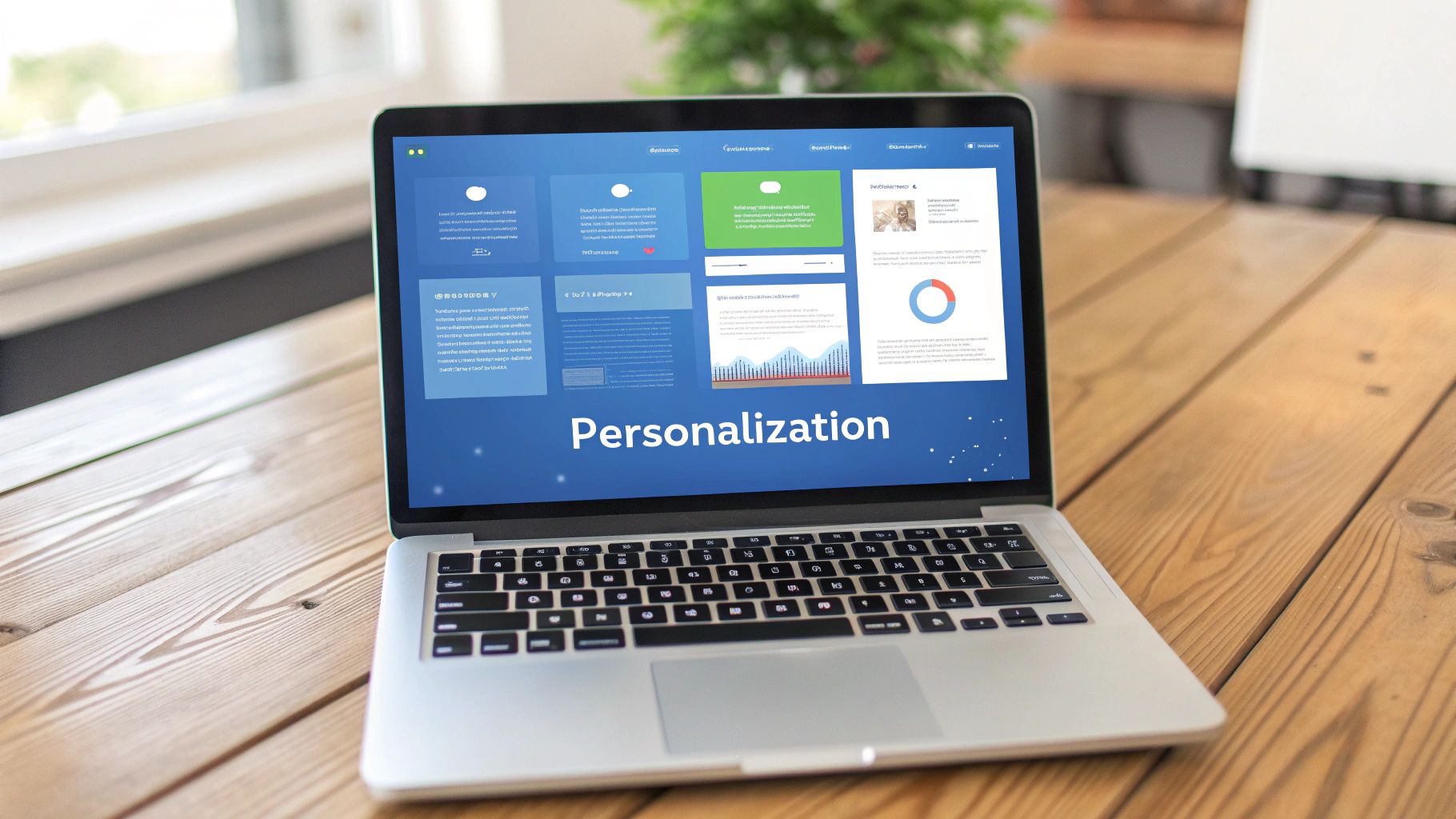
This focused approach prevents the drop-off that occurs when ads lead to a generic homepage. Instead of forcing users to navigate your site, a dedicated landing page guides them toward a single conversion goal. Success stories from platforms like Unbounce, which saw a 30% conversion lift, highlight the power of tailored experiences. Want to learn more? Explore how to get landing page conversion optimization done right.
How to Implement Landing Page Optimization Effectively
Start by creating a dedicated landing page for each distinct ad group or campaign. This ensures your message matches the ad copy, building trust and reducing bounce rates. From there, you can refine elements to boost performance.
Here are some actionable tips for successful landing page optimization:
- Match Headlines to Ad Copy: Your landing page headline should mirror the headline in your ad. This creates a cohesive user journey.
- Use Compelling Visuals: A high-quality hero image or a short video can capture attention and quickly communicate value.
- Include Social Proof: Add testimonials, case studies, or client logos to build credibility.
- Minimize Form Fields: Reduce friction by only asking for essential information. Each extra field can decrease your conversion rate.
- Ensure Fast Load Times: A slow page is a major conversion killer. Optimize images and scripts to ensure your page loads in under three seconds. To enhance your efforts, you can find a variety of landing page optimization tools on landermagic.com to help analyze and improve performance.
3. How Can Personalization and Dynamic Content Increase Conversions?
Personalization is one of the most powerful conversion rate optimization strategies. It involves tailoring content and offers to individual visitors based on data like demographics, location, or past behavior. This relevance drastically increases engagement, making visitors feel understood and valued, which directly encourages conversions.
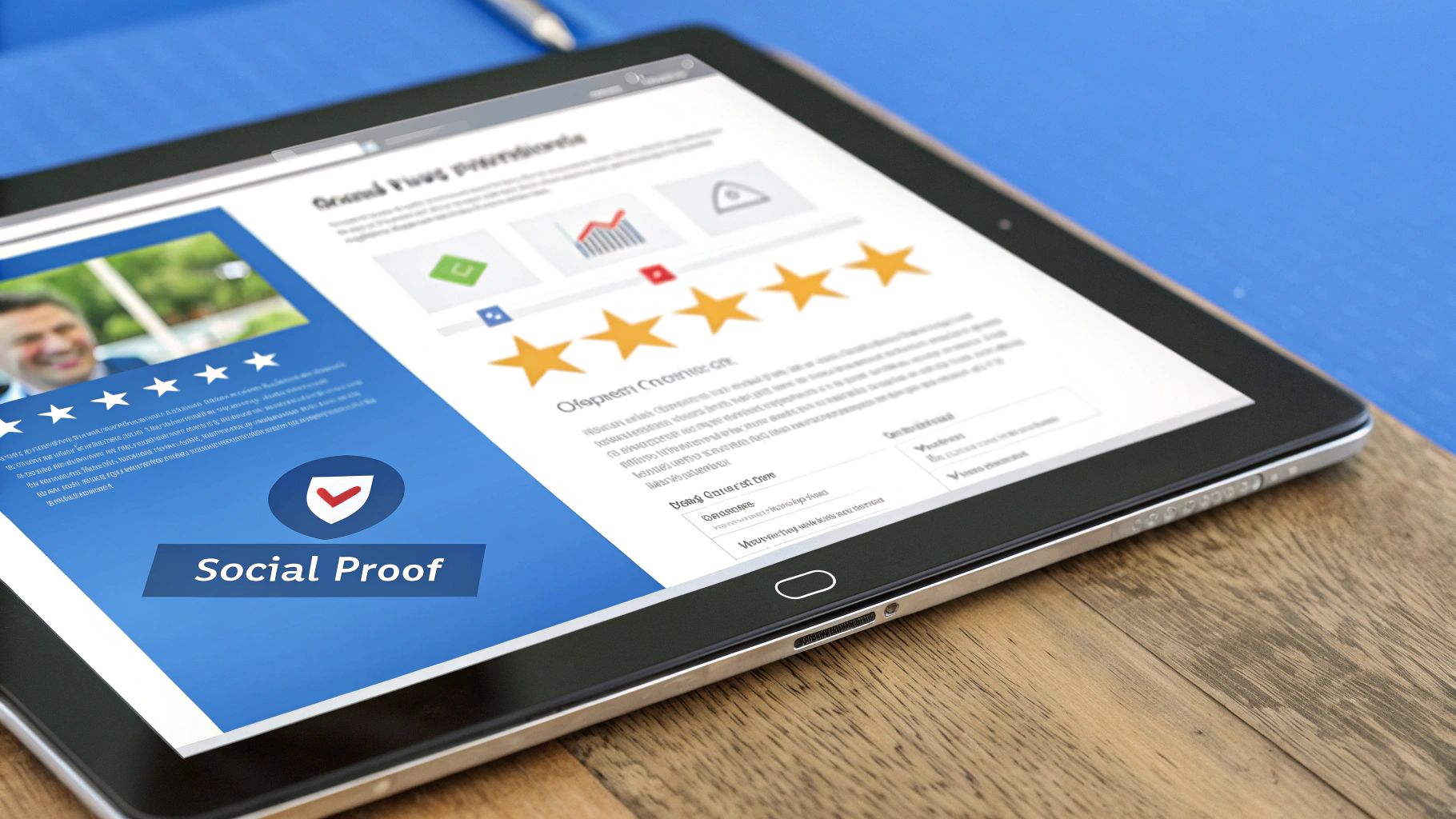
This approach moves beyond a one-size-fits-all landing page. Tech giants have proven its effectiveness: Amazon's recommendation engine is responsible for an estimated 35% of its revenue. Similarly, Netflix personalizes thumbnails to keep users engaged. This level of customization builds a stronger connection and guides users more effectively toward conversion.
How to Implement Personalization Effectively
To get started, you don't need a massive data science team. You can begin with simple rules based on easily accessible data, such as the visitor's location or device. For a deeper dive into how this looks in practice, you can explore some excellent personalized landing page examples on landermagic.com.
Here are some actionable tips for successful personalization:
- Start Simple: Begin with basic segmentation. For instance, show different offers or hero images to visitors from different countries.
- Leverage User Behavior: Personalize content based on past interactions. If a user previously viewed a specific product category, highlight those products on their next visit.
- Use Dynamic Text Replacement: Match your landing page headline directly to the keyword the user searched for. This creates immediate message consistency.
- Respect User Privacy: Always be transparent about the data you collect and provide clear opt-out options. Trust is crucial for long-term success.
4. How Does Social Proof Build Trust and Boost Conversions?
Social proof is a psychological principle that taps into our tendency to follow the actions of others. As a conversion rate optimization strategy, it involves showcasing positive feedback and user engagement to build credibility. By displaying testimonials, reviews, and certifications, you reassure potential customers that they are making a wise choice.
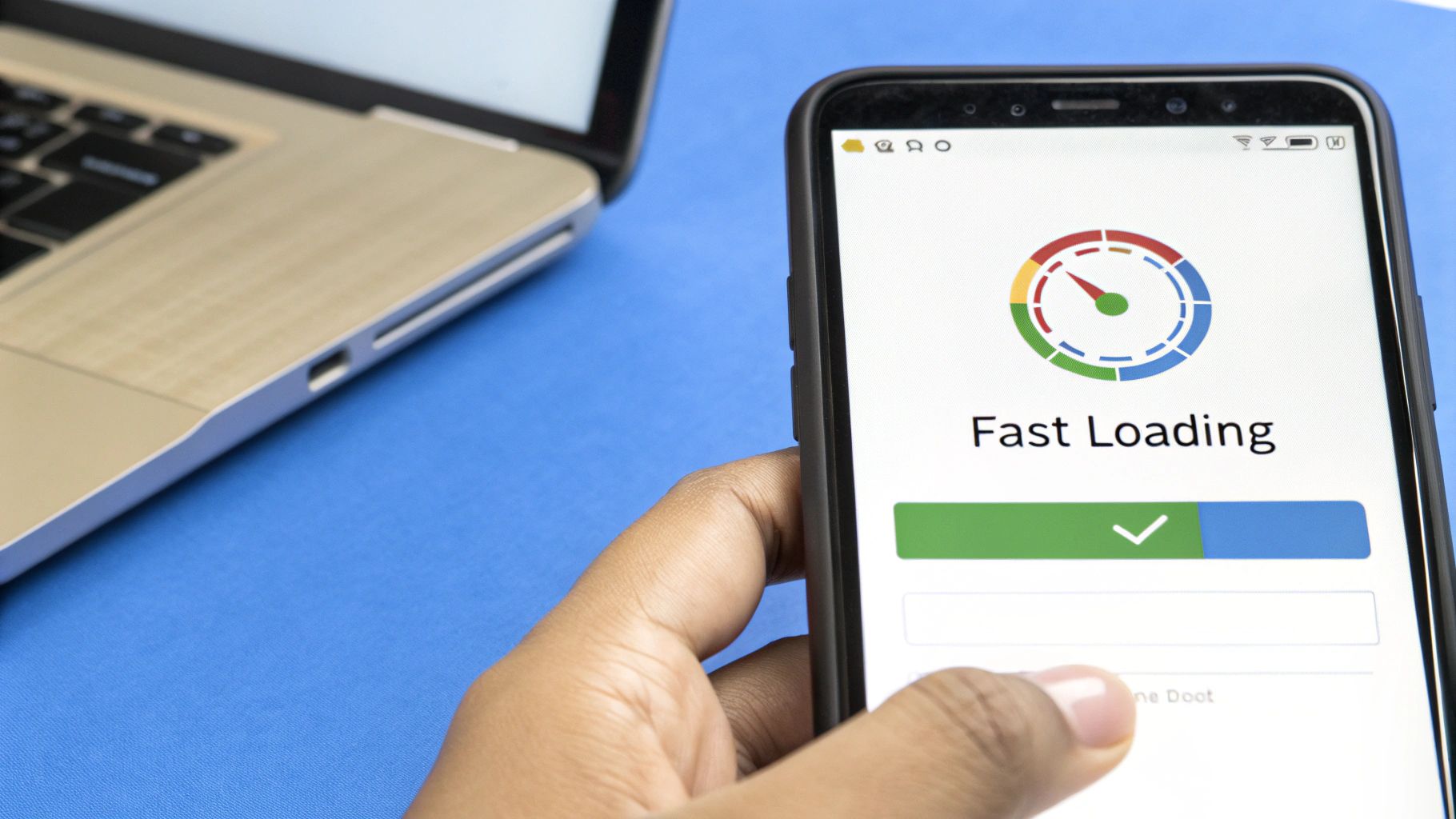
This data-backed approach leverages herd mentality to your advantage. Famous examples include Booking.com's real-time notifications like "5 people are looking at this hotel right now" and Airbnb’s extensive review system. These signals build trust and reduce visitor anxiety.
How to Implement Social Proof Effectively
Start by identifying the most persuasive forms of social proof for your audience. For a B2B service, customer logos and case studies might be most effective. For an e-commerce product, star ratings and user photos are often more impactful. Integrate these signals seamlessly near key decision points, like a sign-up form. For an all-in-one solution, explore the capabilities of the Testimonial.to platform.
Here are some actionable tips for successful implementation:
- Be Specific and Authentic: Use real testimonials with customer names and photos. A specific story about how your solution solved a problem is highly impactful.
- Showcase Numbers: Quantify your success. "Trusted by 50,000+ users" is far more compelling than a generic claim.
- Use Trust Badges: Display security seals, industry awards, or partner logos to instantly communicate trustworthiness.
- Leverage Video Testimonials: Video content is highly engaging and adds a layer of authenticity that text cannot match. For more inspiration, you can explore these powerful social proofing examples.
5. What Role Do Exit-Intent Popups Play in Visitor Retention?
Exit-intent popups are a powerful tool among conversion rate optimization strategies. They re-engage visitors at the precise moment they are about to leave your landing page. This technology tracks mouse movements, triggering an overlay when behavior indicates an intention to navigate away. It creates a final opportunity to present a compelling offer.
This last-chance appeal can dramatically boost conversions. For example, e-commerce brands use this technology to recover an average of 15% of abandoning visitors with targeted discounts. It's an effective way to capture emails from otherwise lost traffic.
How to Implement Exit-Intent Popups Effectively
To implement this strategy, use a tool like OptinMonster or Sumo. The key is to design an offer that provides undeniable value. Instead of just asking for an email, offer a tangible incentive like a discount, a free resource, or exclusive content.
Here are some actionable tips for successful exit-intent popups:
- Offer Genuine Value: Provide a compelling reason for the user to stay, such as a 10% discount or a free ebook.
- Use Compelling Copy: Your headline and call-to-action must be clear, concise, and persuasive. Use action-oriented language.
- A/B Test Your Offers: Test different offers, headlines, and designs to identify the combination that generates the highest conversion rate.
- Ensure an Easy Exit: Nothing frustrates a user more than a popup that's hard to close. Make the "No, thanks" link prominent and easy to click.
6. Why is Mobile Optimization Essential for High Conversion Rates?
In an era where mobile traffic often surpasses desktop, mobile optimization is a critical component of any effective conversion rate optimization strategies. This approach ensures your landing pages provide an optimal, seamless user experience across all devices. Responsive design is the foundation, allowing page layouts to adapt to different screen sizes.
Neglecting mobile users means alienating a significant portion of your audience. The proof is in the results: Starbucks saw a 20% increase in mobile conversions after a redesign. Airbnb's mobile-first app now generates the majority of its bookings. These successes underscore the direct link between a superior mobile experience and higher conversion rates.
How to Implement Mobile Optimization Effectively
The goal is to eliminate friction for users on smaller screens. Start by adopting a "mobile-first" mindset, designing the experience for the smallest screen and then scaling up. This ensures the core message and functionality are clear and accessible to every visitor.
Here are some actionable tips for successful mobile optimization:
- Design for Touch: Use large, easily tappable buttons and interactive elements.
- Simplify Navigation and Forms: Minimize the number of form fields and use a simple, clear navigation menu.
- Optimize for Speed: Compress images and leverage browser caching to ensure your page loads quickly on mobile connections.
- Test on Real Devices: While simulators are useful, nothing beats testing your page on actual smartphones and tablets to identify real-world usability issues.
7. How Does Form Optimization Reduce Friction and Increase Leads?
Your form is the final step before a conversion. Form optimization focuses on reducing friction by simplifying the submission process and minimizing required fields. This strategy acknowledges a fundamental truth: every extra field is another opportunity for a potential lead to abandon the process.
This is one of the most impactful conversion rate optimization strategies because it directly addresses user effort. Small changes can yield massive results. For example, Expedia famously increased annual profit by $12 million simply by removing one optional field from their booking form.
How to Implement Form Optimization Effectively
Begin by evaluating your current form. Ask yourself: is every single field absolutely essential? The goal is to make the process feel effortless for the user.
Here are some actionable tips for successful form optimization:
- Remove Optional Fields: If you don't need the information immediately, get rid of it. You can always gather more data later.
- Use a Single-Column Layout: Research shows that single-column forms are completed faster and are less visually overwhelming.
- Provide Clear Labels and Inline Validation: Use clear labels above each field. Implement inline validation to give users instant feedback if they make an error.
- Group Related Fields Logically: If your form must be long, group related information into sections (e.g., "Contact Information") to make it more manageable.
8. What is the Impact of Page Speed on Your Conversion Rate?
In the world of conversion rate optimization strategies, speed is a fundamental requirement. Page speed optimization involves minimizing the time it takes for your landing page to load. A slow-loading page frustrates users and often leads them to abandon your site before your offer is even seen.
The impact of load time on revenue is staggering. Amazon calculated that a mere one-second delay could cost them $1.6 billion in sales annually. Walmart saw conversions increase by 2% for every one-second improvement in page speed. These figures underscore a critical truth: a fast, responsive landing page is a non-negotiable component of a high-converting campaign.
How to Implement Page Speed Optimization Effectively
Begin by analyzing your current performance using a free tool like Google's PageSpeed Insights. This will provide a baseline score and a report highlighting specific areas for improvement.
Here are some actionable tips for successful page speed optimization:
- Compress Your Images: Use tools like TinyPNG to reduce image file sizes without a noticeable loss in quality.
- Leverage Browser Caching: Configure your server to tell browsers to store static assets locally. This dramatically speeds up load times for returning visitors.
- Utilize a Content Delivery Network (CDN): A CDN stores copies of your site on servers worldwide, reducing latency for users far from your primary server.
- Monitor Core Web Vitals: Pay close attention to Google's Core Web Vitals in your Google Search Console. These metrics measure real-world user experience and are crucial for both SEO and conversions.
9. How Can You Recover Sales Through Cart Abandonment Strategies?
Cart abandonment recovery is a critical set of conversion rate optimization strategies designed to re-engage visitors who leave without completing a purchase. Instead of treating these potential customers as lost, this approach uses targeted follow-ups—typically email or retargeting ads—to remind and incentivize them to return.
The effectiveness of this strategy is well-documented. Patagonia's abandoned cart emails achieve impressive 40% open rates. Similarly, Casper's recovery sequence goes beyond a simple reminder, offering sleep tips to reinforce the value proposition. A thoughtful recovery strategy can turn a near-miss into a successful conversion.
How to Implement Cart Abandonment Recovery Effectively
To build a successful recovery system, you need a multi-channel approach. Begin by setting up an automated email sequence using a platform like Klaviyo or Mailchimp.
Here are some actionable tips for a powerful cart recovery strategy:
- Act Quickly: Send the first recovery email within one hour of abandonment.
- Show, Don't Just Tell: Always include high-quality images of the exact products left in the cart.
- Offer Progressive Incentives: Consider a multi-email sequence. The first can be a simple reminder, while a later one might offer a small discount.
- Use Strategic Urgency: Phrases like "Your items are selling fast" can motivate immediate action, but use them honestly to maintain trust.
- Simplify the Return: Ensure your recovery emails link directly back to a pre-populated cart, making it easy for the customer to complete their purchase.
10. How Does Urgency and Scarcity Psychology Drive Action?
Leveraging urgency and scarcity is one of the most powerful psychological conversion rate optimization strategies. This approach motivates immediate action by creating time pressure or highlighting limited availability. By signaling that an opportunity is fleeting, you tap into the Fear of Missing Out (FOMO) and encourage visitors to convert now rather than later.
This tactic removes hesitation from the decision-making process. Booking.com famously increases conversions by displaying messages like "Only 2 rooms left," while Amazon's lightning deals use countdown timers to drive immediate purchases. These methods create a compelling reason for users to act instantly.
How to Implement Urgency and Scarcity Effectively
To begin, identify opportunities where a sense of urgency or scarcity would be natural and believable. This could be a limited-time offer, low stock levels, or a promotion deadline. The key is to integrate these elements authentically.
Here are some actionable tips for successful implementation:
- Ensure Claims Are Genuine: Honesty is crucial. False scarcity can permanently damage brand trust and credibility.
- Use Countdown Timers: For time-sensitive offers, a visual countdown timer provides a clear, dynamic reminder of the deadline.
- Highlight Limited Availability: Use clear messaging like "Low Stock" or "Only 3 Spots Left" near the call-to-action button.
- Balance with Trust: While creating urgency, ensure your page still includes trust signals like customer reviews and security badges.
Conversion Rate Optimization Strategies Comparison
Your Next Steps: Putting These CRO Strategies Into Action
You've just explored the most effective conversion rate optimization strategies available. From A/B testing copy to the psychology of urgency, the path to turning more clicks into customers is now clear. But knowledge is only the first step. The real transformation begins with implementation.
The key is to avoid analysis paralysis. Don't try to implement all ten strategies at once. Instead, identify the single biggest leak in your conversion funnel and plug it with a focused effort.
From Information to Implementation: Your Action Plan
To transition from reading to achieving results, you need a structured plan. Ready to get started?
Here is a simple, actionable framework:
- Step 1: Diagnose Your Biggest Bottleneck. Dive into your analytics. Is your mobile bounce rate alarmingly high? Focus on mobile optimization. Are users dropping off at the checkout form? Prioritize form optimization. Use data to choose your first battle.
- Step 2: Formulate a Hypothesis. Create a clear, testable hypothesis. For example: "By reducing our form fields from seven to four, we will increase submissions by 15%." A strong hypothesis is specific and measurable.
- Step 3: Choose Your Strategy and Implement. Select one of the conversion rate optimization strategies from this article that directly addresses your hypothesis. If forms are the problem, implement form optimization techniques.
- Step 4: Measure, Learn, and Repeat. Run your A/B test and monitor the results. Did your change validate the hypothesis? Take the insights, form a new hypothesis, and repeat the cycle. This continuous loop is the heart of successful CRO.
The Power of Consistent Optimization
Mastering these concepts isn't about a one-time lift in conversions. It's about building a sustainable system for growth. Each successful test and incremental improvement compounds over time. This commitment transforms marketing from a cost center into a predictable revenue engine.
By understanding what truly motivates your audience, you create more effective campaigns, reduce wasted ad spend, and build a stronger, more profitable connection with your customers. You are no longer just buying traffic; you are building an efficient conversion machine. What will you optimize first?
Ready to implement advanced personalization without the technical headache? LanderMagic is designed to help you create, test, and launch high-converting landing pages tailored to every ad group and keyword, fast. Start turning more of your Google Ads traffic into revenue today by visiting LanderMagic.



